To choose the right drone data analysis software for your industry, start by defining your specific requirements and necessary features. Assess the software's data processing capabilities, ensuring it can handle your data types and volumes. Evaluate how well it integrates with your existing systems and compare reporting and visualization features. Consider cloud versus on-premise solutions based on your needs and budget. Don't forget to examine security measures, workflow automation options, and vendor support. Finally, assess the software's scalability and future-proofing potential. By thoroughly evaluating these factors, you'll be better equipped to make an informed decision that aligns with your industry's unique challenges.
Key Takeaways
- Define industry-specific requirements to ensure the software meets unique sector challenges and data analysis needs.
- Assess data processing capabilities, including compatibility with various sensors and advanced operations like 3D modeling.
- Evaluate integration options with existing systems and industry-specific applications for seamless workflow.
- Compare reporting and visualization features to effectively communicate findings and generate customizable outputs.
- Consider cloud vs. on-premise solutions based on data storage needs, security requirements, and internet connectivity.
Define Your Industry-Specific Requirements
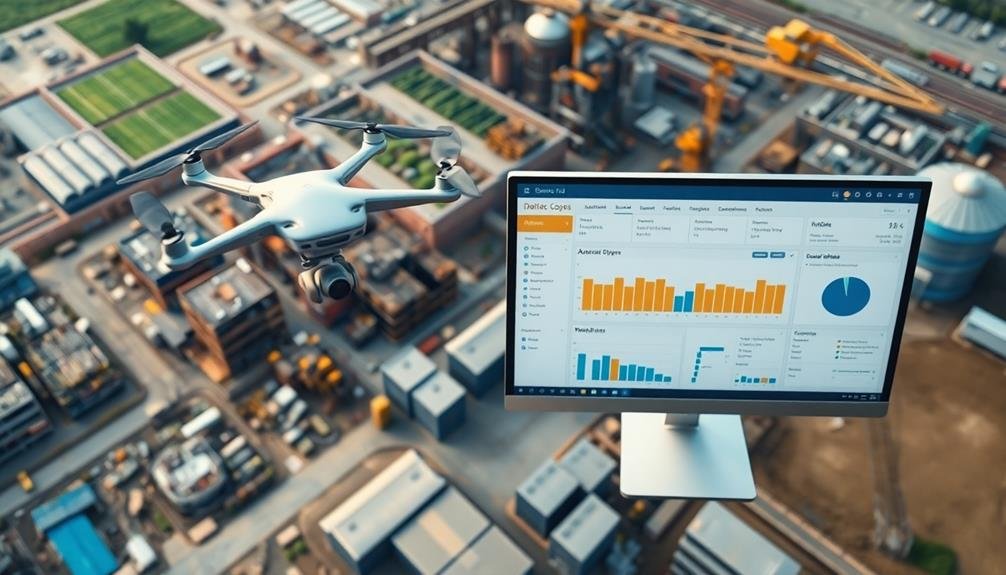
When selecting drone data analysis software, it's crucial to first define your industry-specific requirements. Start by identifying the unique challenges and goals within your sector.
For agriculture, you'll need software that can analyze crop health and yield predictions. In construction, focus on tools that offer accurate volumetric measurements and progress tracking. Mining operations require software capable of generating high-precision terrain models and stockpile calculations.
Reflect on the types of data you'll be collecting and processing. Will you need to handle thermal imagery, multispectral data, or LiDAR point clouds? Confirm the software can support these formats.
Evaluate the specific outputs you require, such as 3D models, orthomosaics, or contour maps. Look for industry-standard integrations that align with your existing workflows and software ecosystem.
Assess the scale of your projects and the volume of data you'll be processing. Some industries may need software that can handle large datasets efficiently.
Don't forget to take into account regulatory compliance requirements specific to your field, such as data security standards or reporting formats. By clearly defining these industry-specific needs, you'll be better equipped to choose software that truly addresses your unique operational demands.
Assess Data Processing Capabilities

After pinpointing your industry-specific needs, you'll want to evaluate the data processing capabilities of potential software solutions.
Look for software that can handle the types and volume of data your drones collect. Consider factors like supported file formats, processing speed, and the ability to handle large datasets.
Check if the software can perform advanced operations like 3D modeling, orthomosaic creation, or point cloud generation. These features are essential for industries like construction, mining, and agriculture.
Assess the software's ability to conduct automated measurements, detect changes over time, and generate accurate reports.
Examine the software's compatibility with various sensors and drone models. This guarantees you're not limited to specific hardware.
Additionally, evaluate the processing power required and whether the software offers cloud-based or local processing options.
Look for tools that provide real-time data processing and visualization capabilities. This can be critical for time-sensitive applications.
Evaluate Integration With Existing Systems
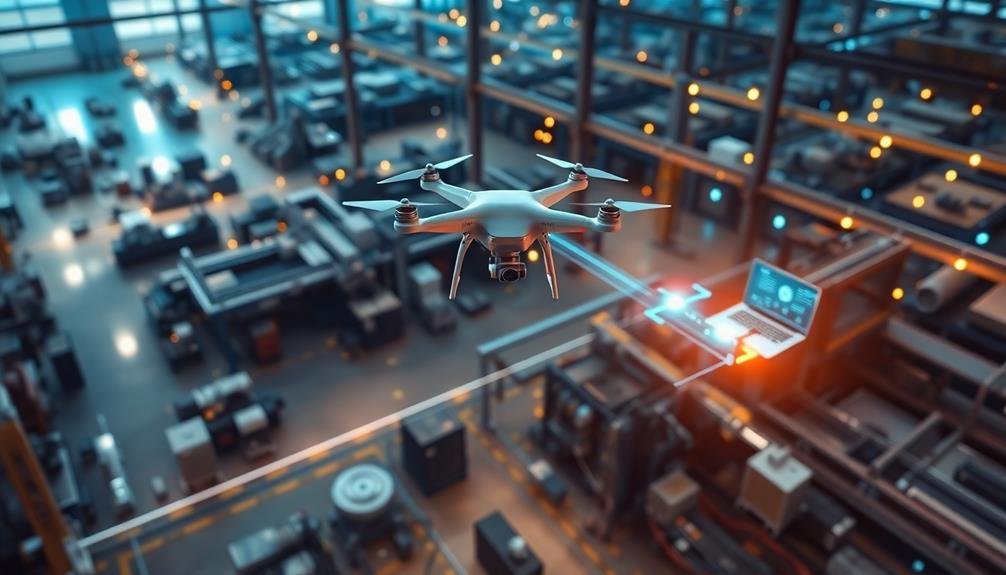
Seamless integration with your existing systems is essential when selecting drone data analysis software. You'll want to guarantee that the new software can work harmoniously with your current tools and workflows.
Start by identifying which systems you need the drone software to integrate with, such as GIS platforms, asset management systems, or project management tools.
Check if the software offers APIs or pre-built integrations with popular industry-specific applications. This can save you time and resources in custom development.
Consider the data formats supported by the drone software and whether they're compatible with your existing systems. Look for software that can import and export data in formats you commonly use.
Evaluate the software's ability to sync data across platforms in real-time, which can enhance collaboration and decision-making.
Don't forget to assess the level of technical support provided for integrations. Some vendors offer dedicated integration specialists to help you set up and troubleshoot connections.
Lastly, consider the scalability of the integration. As your needs grow, will the software be able to accommodate new systems and increased data flow?
Compare Reporting and Visualization Features

When selecting drone data analysis software, you'll want to examine the reporting and visualization features closely.
Look for a range of data presentation options that allow you to effectively communicate your findings to stakeholders.
Consider software that offers customizable report templates, enabling you to tailor your outputs to specific project requirements or client preferences.
Data Presentation Options
The ability to effectively present drone data is vital for making informed decisions and communicating insights. When choosing drone data analysis software, you'll want to take into account various data presentation options to guarantee you can showcase your findings in the most impactful way.
Look for software that offers customizable dashboards, allowing you to create tailored views of your data. These should include options for charts, graphs, and maps that can be easily understood by stakeholders.
Pay attention to the software's ability to generate 2D and 3D models, as these can be important for visualizing terrain, structures, and changes over time.
Evaluate whether the software supports interactive presentations, enabling you to zoom, pan, and manipulate data in real-time during meetings. This feature can be particularly useful for demonstrating spatial relationships and highlighting specific areas of interest.
Additionally, check if the software allows for easy export of data in various formats, such as PDF reports, CSV files, or even virtual reality experiences.
Lastly, assess the software's capability to integrate with other tools and platforms you use, guaranteeing seamless data sharing and presentation across your organization's ecosystem.
Customizable Report Templates
Customizable report templates are an essential feature to consider when comparing reporting and visualization options in drone data analysis software. These templates allow you to tailor your reports to specific project requirements, client preferences, or industry standards.
Look for software that offers a wide range of pre-designed templates as well as the ability to create and save your own custom designs.
When evaluating template options, consider the level of flexibility they provide. Can you easily add or remove sections, adjust layouts, and incorporate your company's branding?
Check if the software allows you to include various data types, such as 2D maps, 3D models, charts, and tables within the templates. This versatility guarantees you can present your drone data in the most effective and relevant format for each project.
Additionally, assess the ease of use of the template editor. A user-friendly interface with drag-and-drop functionality can save you time and effort when creating or modifying reports.
Look for features like automatic data population, which can streamline your workflow by pulling relevant information directly from your drone data analysis into the report template.
Consider Cloud Vs On-Premise Solutions

When choosing drone data analysis software, you'll need to weigh the benefits of cloud-based versus on-premise solutions.
Consider your data storage requirements, as cloud platforms offer scalable storage but may incur ongoing costs, while on-premise solutions provide full control but require upfront investment.
You should also factor in your internet connectivity needs and assess security and compliance requirements, especially if you're dealing with sensitive data or operating in regulated industries.
Data Storage Requirements
How much storage space will your drone data analysis software require? This is a vital consideration when choosing your solution. Drone imagery and data can quickly consume large amounts of storage, especially if you're working with high-resolution images or 3D models.
Consider the volume of data you'll be collecting and processing regularly. Factor in the size of individual files, such as raw images, processed orthomosaics, and 3D point clouds.
You'll also need to account for long-term data retention requirements, which may be dictated by industry regulations or internal policies.
Cloud-based solutions often offer scalable storage options, allowing you to increase capacity as needed. They also typically handle data backups and redundancy automatically.
However, you'll need to factor in ongoing costs and make sure you have sufficient internet bandwidth for uploads and downloads.
On-premise solutions give you more control over your data but require upfront investment in hardware and ongoing maintenance.
You'll need to plan for future growth and implement your own backup and disaster recovery strategies.
Assess your current and future storage needs carefully to make sure your chosen software can accommodate your data requirements without breaking the bank or compromising performance.
Internet Connectivity Considerations
Internet connectivity plays an essential role in your choice between cloud-based and on-premise drone data analysis solutions. Cloud-based options offer flexibility and accessibility but require a stable internet connection. On-premise solutions provide more control over data but may limit remote access.
Consider your project locations and team's needs. If you're working in areas with reliable internet, cloud solutions can streamline collaboration and reduce hardware costs. However, if you're operating in remote areas or have strict data security requirements, on-premise software might be more suitable.
Evaluate your bandwidth capabilities. Large drone datasets can strain network resources, potentially slowing down other operations. On-premise solutions eliminate this concern but may require significant upfront investment in hardware.
| Factor | Cloud-Based | On-Premise |
|---|---|---|
| Internet Dependency | High | Low |
| Remote Access | Easy | Limited |
| Initial Cost | Lower | Higher |
| Scalability | Flexible | Fixed |
| Data Security | Provider-managed | Self-managed |
Ultimately, your choice should align with your connectivity infrastructure, data volume, security needs, and budget constraints. Some vendors offer hybrid solutions, allowing you to leverage both cloud and on-premise capabilities as needed.
Security and Compliance
Security and compliance considerations are essential when selecting drone data analysis software. You need to evaluate whether cloud-based or on-premise solutions better suit your organization's needs and regulatory requirements.
Cloud solutions offer convenience and scalability but may raise concerns about data sovereignty and third-party access. On-premise options provide greater control over sensitive data but require more internal resources for maintenance and security.
Assess the software's encryption protocols for data in transit and at rest. Look for features like multi-factor authentication and role-based access controls to protect against unauthorized use. Confirm the software complies with relevant industry standards and regulations, such as GDPR, HIPAA, or sector-specific guidelines.
Consider the vendor's data handling practices, including retention policies and disaster recovery plans. You'll want to know where your data is stored and who's access to it.
Evaluate the software's audit logging capabilities to track user actions and maintain accountability.
Don't forget to review the vendor's security certifications and ask about their incident response procedures. Regular security updates and vulnerability assessments are vital for maintaining a robust defense against evolving threats in drone data analysis.
Analyze Workflow Automation Options
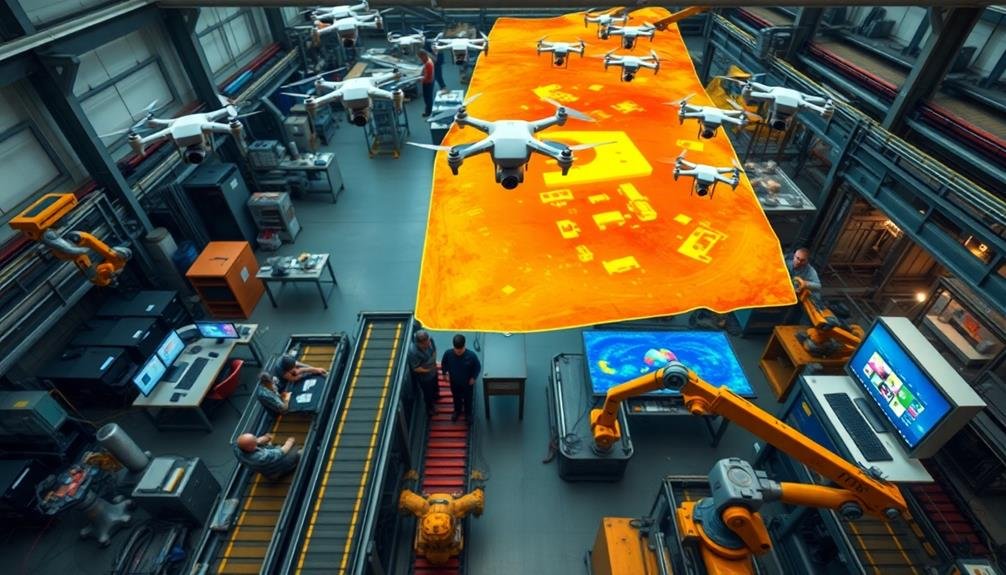
When evaluating drone data analysis software, examining workflow automation options is essential for maximizing efficiency.
Look for platforms that offer customizable workflows to match your specific processes. These should include automated data import, processing, and report generation features.
Consider software that allows you to create preset analysis templates, reducing manual input for recurring tasks.
Evaluate options for batch processing, which can handle multiple datasets simultaneously. This feature is particularly useful for large-scale projects or frequent data collection.
Assess the software's ability to integrate with other tools in your ecosystem, such as project management systems or GIS platforms.
Seamless integration can streamline your overall workflow and reduce data silos.
Look for automation features that support quality control, such as automatic error detection and flagging of anomalies.
This can save time and improve the accuracy of your results.
Examine Security and Compliance Measures
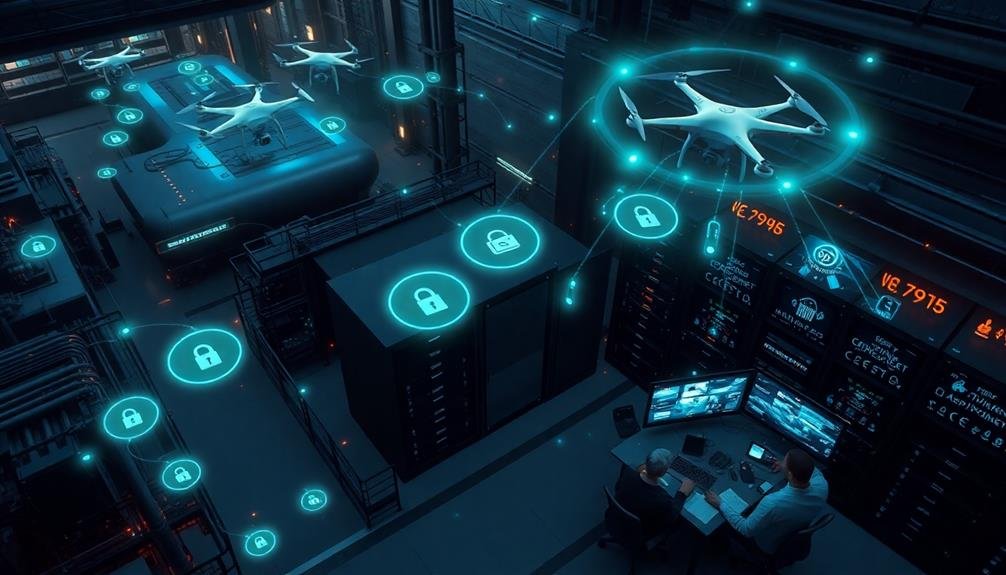
Robust security and compliance measures are paramount when selecting drone data analysis software. You'll want to guarantee that your chosen solution adheres to industry standards and regulations, protecting sensitive data from unauthorized access or breaches.
Look for software that offers end-to-end encryption, both in transit and at rest. Multi-factor authentication and role-based access controls are essential features to prevent unauthorized users from accessing your data. Additionally, check if the software complies with relevant regulations such as GDPR, HIPAA, or industry-specific standards.
Consider the following security and compliance aspects:
| Feature | Importance |
|---|---|
| Data encryption | Critical |
| Access controls | High |
| Audit trails | Medium |
| Regulatory compliance | High |
Don't forget to evaluate the software provider's data center security measures and disaster recovery plans. Ask about their incident response procedures and how they handle data breaches.
Lastly, guarantee the software allows you to maintain ownership and control of your data. Some providers may claim rights to data processed through their platform, so carefully review their terms of service and data usage policies before making a decision.
Review Vendor Support and Training

After ensuring your data's safety, it's time to contemplate the support and training offered by drone data analysis software vendors. Look for providers that offer extensive customer support, including multiple communication channels like phone, email, and live chat.
Check if they provide 24/7 assistance, especially if your operations span different time zones.
Evaluate the quality and availability of training resources. Does the vendor offer online tutorials, webinars, or in-person workshops?
Consider whether they provide personalized onboarding sessions or dedicated account managers to help you get started. Look for vendors that regularly update their training materials to keep pace with software updates and industry trends.
Assess the vendor's documentation, such as user manuals and knowledge bases. These resources should be well-organized, easily searchable, and regularly updated.
Check if they offer a community forum where users can share experiences and troubleshoot issues.
Don't overlook the importance of ongoing support. Ask about the vendor's policy for handling feature requests and bug fixes.
A responsive vendor that values customer feedback can greatly enhance your experience with the software and help you maximize its potential for your drone data analysis needs.
Assess Scalability and Future-Proofing
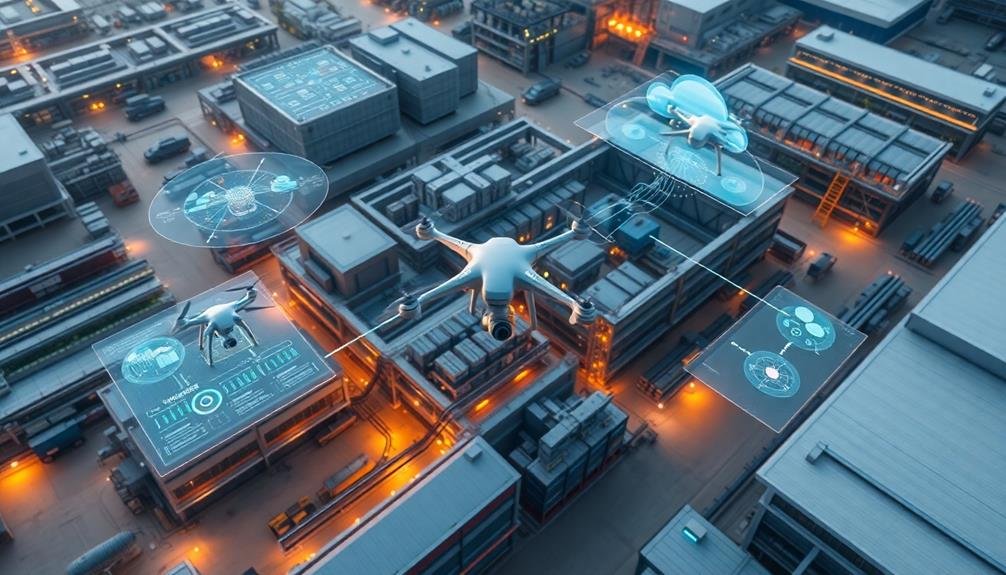
Scalability is an essential factor to take into account when selecting drone data analysis software. You'll want to verify the software can grow with your business needs and handle increasing amounts of data as your drone operations expand.
Consider the software's ability to process larger datasets, support multiple users, and integrate with other systems you may adopt in the future.
Look for software that offers cloud-based solutions, as these often provide better scalability than on-premises options. Check if the software can handle different types of drone data, including various sensor outputs and file formats. This flexibility will allow you to incorporate new drone technologies as they become available.
Future-proofing your choice involves evaluating the vendor's commitment to regular updates and feature improvements. Investigate their roadmap for upcoming releases and their track record of staying current with industry trends.
Consider whether the software supports emerging technologies like artificial intelligence and machine learning, which can enhance data analysis capabilities.
Lastly, assess the software's compatibility with different operating systems and devices. This verifies you can access and analyze data across various platforms as your organization's needs evolve.
Frequently Asked Questions
How Much Does Drone Data Analysis Software Typically Cost?
You'll find drone data analysis software costs vary widely. You can expect to pay anywhere from $50 to $1,000+ per month, depending on features, capabilities, and user count. Some offer free trials or basic plans too.
Can Drone Data Analysis Software Work With Data From Multiple Drone Brands?
You'll find that most drone data analysis software can work with data from multiple drone brands. It's designed to be versatile, allowing you to integrate various data sources. However, always check compatibility before purchasing to guarantee it meets your needs.
What Programming Skills Are Needed to Use Drone Data Analysis Software Effectively?
You'll typically need basic programming skills in Python or R. Familiarity with GIS concepts, data visualization, and image processing is helpful. Some software's user-friendly interfaces reduce the need for advanced coding knowledge, but it's still beneficial.
How Often Are Updates and New Features Released for Drone Analysis Software?
You'll typically see updates for drone analysis software every few months. Major feature releases often come annually. It's best to check each provider's update schedule, as they'll vary in frequency and content based on user needs.
Is It Possible to Trial Drone Data Analysis Software Before Purchasing?
Yes, you'll find many drone data analysis software providers offer free trials. You can typically test the features for 7-30 days. It's a great way to evaluate if the software meets your needs before committing to a purchase.
In Summary
You've got a lot to contemplate when choosing drone data analysis software for your industry. Remember to prioritize your specific needs, processing power, integration capabilities, and reporting features. Don't forget to weigh cloud vs. on-premise options, automation possibilities, and security measures. With the right vendor support and scalability, you'll be set for the long haul. Take your time, compare options, and you'll find the perfect fit for your drone data analysis needs.

As educators and advocates for responsible drone use, we’re committed to sharing our knowledge and expertise with aspiring aerial photographers.
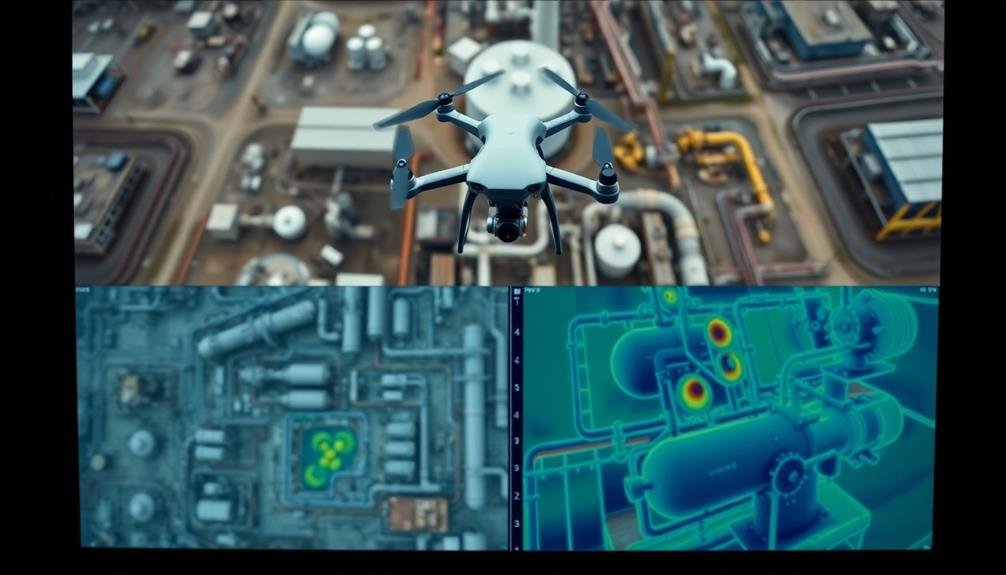



Leave a Reply